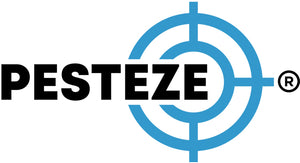UNDERSTANDING THE RISKS OF RELOCATING URBAN WILDLIFE

UNDERSTANDING THE RISKS OF RELOCATING URBAN WILDLIFE
SUMMARY
This guide explores why relocating wild animals from urban environments can cause harm rather than help. Learn about the ecological, ethical, and health-related risks of relocation, and discover safer, more sustainable ways to manage human–wildlife interactions.
FEATURES
-
Stress and Mortality: Relocated animals often struggle to survive.
-
Disruption of Ecosystems: Moving wildlife can harm native species.
-
Disease Spread: Relocation increases the risk of pathogen transmission.
-
Territorial Conflicts: Released animals may be attacked or outcompeted.
-
Legal Restrictions: Many regions regulate or prohibit wildlife relocation.
-
Humane Alternatives: Focus on coexistence, exclusion, and habitat modification.
GUIDE DESCRIPTION
Relocating wildlife may seem like a compassionate act, especially when an animal appears lost or out of place in an urban setting. However, this practice often does more harm than good — both for the animal and the surrounding ecosystem. Understanding the hidden consequences of relocation can help communities make more humane and sustainable choices when managing urban wildlife.
When wild animals are relocated, they face immense stress and disorientation. Most species develop strong home ranges and survival patterns based on their environment. Removing them from familiar food and shelter sources can result in starvation, dehydration, or death within days. Studies have shown that up to 70% of relocated animals do not survive the transition due to the combined effects of stress, predation, and competition in unfamiliar territory.
Beyond individual survival, relocation can disrupt delicate ecosystems. Moving animals between habitats introduces new predators, alters food chains, and may endanger resident wildlife. It can also facilitate the spread of diseases and parasites. Animals like raccoons, opossums, and foxes can carry pathogens such as rabies, distemper, or leptospirosis, which may infect new populations and even humans.
Relocation can also lead to behavioral conflicts. Many wild animals are territorial and may attack newcomers that invade their space. This territorial aggression can cause injuries and additional stress, making relocation an ineffective long-term solution for managing urban wildlife populations.
In many regions, relocating wildlife without a permit is illegal due to these ecological and health risks. Wildlife agencies and rehabilitation centers emphasize that the best approach is humane coexistence. Instead of removing animals, focus on addressing the root causes that attract them to urban areas — such as open trash bins, pet food, or accessible shelters under decks and attics.
Humane alternatives include exclusion techniques, habitat modification, and deterrents that encourage animals to move on naturally. For example, sealing entry points, securing food sources, and using motion-activated lights or sound deterrents can reduce conflicts effectively. When removal is absolutely necessary, it should be handled by licensed professionals who can ensure compliance with local wildlife protection laws.
By choosing coexistence and prevention over relocation, communities can safeguard both animal welfare and environmental balance — promoting a safer, healthier, and more compassionate relationship with urban wildlife.
- Saneeth Thota


Comments 0